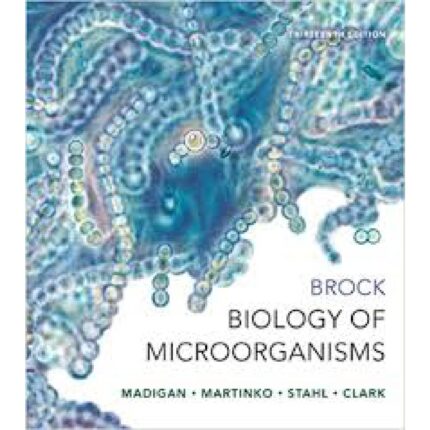Janeway’s Immunobiology, 9th Edition
Chapter 11: Integrated Dynamics of Innate and Adaptive Immunity
Integration of innate and adaptive immunity in response to specific types of pathogens
11-1 The course of an infection can be divided into several distinct phases
11.1 Multiple choice: While innate immune responses to all types of infections induce local inflammatory responses due to activation of blood vessel endothelial cells, some components of the innate response differ depending on the nature of the pathogen. In the case of intracellular bacterial or protozoan infections, tissue-resident dendritic cells and macrophages produce a cytokine that stimulates ILC cells to produce:
- IL-13
- TNF-a
- IL17
- IL22
- IFN-g
11-2 The effector mechanisms that are recruited to clear an infection depend on the infectious agent
11.2 Multiple choice: IL-23 is a cytokine made by macrophages and dendritic cells in response to extracellular bacterial and fungal infections. Mice with a genetic defect in the production of IL-23 are highly susceptible to the gastrointestinal bacterial pathogen, Citrobacter rodentium. Thus, unlike wild-type mice which clear the infection, mice that fail to produce IL-23 succumb to the bacteria and die 1–2 weeks post-infection. Yet, this cytokine does not directly act on the bacteria nor does it function to recruit the granulocytes that are needed to eliminate the pathogen. Instead, IL-23:
- Functions as a chemoattractant for eosinophils and basophils
- Stimulates IL-17 and IL-22 production by ILC3 cells
- Activates tissue-resident ILC2 cells to produce IL-5 and IL-13
- Induces the differentiation of naive CD8 T cells into cytotoxic T cells
- Stimulates gastrointestinal epithelial cells to produce antimicrobial peptides
11.3 Short answer: In addition to producing distinct innate responses locally at the site of infection, the different cytokines produced during type I, type 2, or type 3 immune responses also induce distinct adaptive immune responses that are tailored to the eradication of the three different classes of pathogens. One example is the production of different classes of antibodies during type I, type 2, or type 3 responses. Which step during the induction of the adaptive immune response is the key to generating and coordinating the three different immune modules?
Effector T cells augment the effector functions of innate immune cells
11-3 Effector T cells are guided to specific tissues and sites of infection by changes in their expression of adhesion molecules and chemokine receptors
11.4 Multiple choice: In response to an intracellular bacterial or viral infection, effector TH1 cells, macrophages, NK cells, and CD8 cytotoxic effector cells are all recruited to the site of infection. The coordinated recruitment of all of these cell types is orchestrated by:
- The secretion of the inflammatory cytokine IFN-g in the tissue
- The action of TNF-a on the endothelial cells, leading to fluid leakage into the tissue
- The up-regulation of integrin ligands such as VLA-4 on the blood vessel endothelial cells
- The shared expression of chemokine receptors on these different cell types
- The shared expression of S1PR1 on these cells, recruiting them out of lymphoid tissues
11-4 Pathogen-specific effector T cells are enriched at sites of infection as adaptive immunity progresses
11.5 Multiple choice: Initially after an infection, the majority of the T cells present in the tissue at a site of infection are not specific for the infecting pathogen, but over the course of several days, this changes and antigen-specific T cells become enriched at this site. This is because:
- T cells do not use their T-cell receptors during extravasation from blood into tissues.
- Early after infection, there are few antigen-specific T cells in the host.
- Naive T cells do not express the homing receptors to extravasate into sites of inflammation.
- T cells up-regulate CD69 early after activation and are retained in the lymphoid organs.
- T cells require several days to down-regulate CCR7.
11-5 TH1 cells coordinate and amplify the host response to intracellular pathogens through classical activation of macrophages
11.6 Multiple choice: Individuals with the HIV-induced immunodeficiency disease AIDS have a progressive loss in the number of CD4 T cells in their bodies. These patients have a greatly increased rate of life-threatening disease caused by the inability of their immune system to control infections of the intracellular bacterium, Mycobacterium tuberculosis (Mtb). Mtb infects macrophages and then replicates in the cell’s phagosomes. The most important immune mechanism lacking in these patients that leads to their increased susceptibility to Mtb is a defect in:
- CD4 T cell help for cytotoxic effector CD8 T cells
- The activation of macrophages by TH1 effector cells
- The production of opsonizing antibodies that requires TFH cell help for B cells
- The production of TNF-a by the infected macrophages
- The recruitment of neutrophils to the site of infection
11.7 Multiple choice: Infections of intracellular pathogens (e.g., mycobacteria, listeria, toxoplasma, viruses, etc.) cause a rise in the numbers of monocytes in the blood, a symptom known as monocytosis. In the cases of these infections, monocytosis is likely caused by:
- Increased production of monocytes in the bone marrow induced by TH1 cytokines
- Loss of monocytes into tissues due to inflammation, leading to increased production in the bone marrow
- Differentiation of blood monocytes into macrophages, inducing bone marrow production of new monocytes
- Sticking of blood monocytes to vessel walls due to integrin binding, reducing the numbers of monocytes in the circulation
- Apoptosis of monocytes caused by the toxic effects of the infecting pathogen
11-6 Activation of macrophages by TH1 cells must be tightly regulated to avoid tissue damage
11.8 True/False: Nitric oxide and superoxide radicals are toxic compounds that induce substantial DNA damage. When released by activated M1 macrophages, these compounds cause damage to microbial pathogens and may also cause damage to host cells in the vicinity.
11-7 Chronic activation of macrophages by TH1 cells mediates the formation of granulomas to contain intracellular pathogens that cannot be cleared
11.9 Multiple choice: Leprosy is a disease caused by the intracellular bacterium Mycobacterium leprae, which infects macrophages and replicates in their phagosomes. Human patients with leprosy have a persistent infection of the mycobacteria, as their immune systems are unable to complete eradicate the pathogen. Furthermore, two different forms of the disease have been identified. Some patients have many skin lesions containing a large number of bacteria with little inflammatory response. This is the very disfiguring form of the disease, and is known as lepromatous leprosy. In other patients, few skin lesions and only occasional bacteria are observed, and the skin lesions are accompanied by a robust inflammatory response. These patients have the form of the disease known as tuberculoid leprosy. If one examined a skin biopsy from a patient with tuberculoid leprosy, one would expect to see:
- A large influx of neutrophils and other granulocytes
- A widespread occurrence of tissue necrosis
- A substantial number of granulomas
- Evidence of large numbers of dead or dying mycobacteria
- A large number of skin epithelial cells with intracellular bacteria
11-8 Defects in type 1 immunity reveal its important role in the elimination of intracellular pathogens
11.10 Multiple choice: Toxoplasma gondii is a single-celled parasitic protozoan that infects and replicates in macrophages. It is common in the environment, and is transmitted to humans by the ingestion of undercooked meat or by accidental ingestion of the parasite’s oocytes from contaminated water or cat litter. Infected individuals with healthy immune systems are generally asymptomatic, and rapidly clear the infection. However, in AIDS patients, infections of Toxoplasma gondii can lead to severe disease and even death. To investigate the immune mechanisms important in controlling Toxoplasma gondii, a mouse model of the infection was developed. Mice were infected with the protozoa at a dose where the majority of the mice survive the infection, and at the same time, were injected with a neutralizing antibody to a cytokine made by T cells (anti-‘X’ IgG). A second group of mice received the protozoa plus a control IgG antibody, as shown in Figure Q11.10.













Reviews
There are no reviews yet.